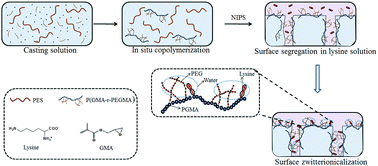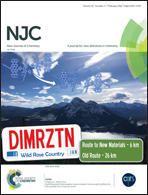Low-fouling PES membranes fabricated via in situ copolymerization mediated surface zwitterionicalization
Abstract
In this work, polyethersulfone (PES) membranes with superior antifouling and anticoagulant properties were prepared effectively and efficiently through the non-solvent induced phase separation (NIPS) method via in situ copolymerization mediated surface zwitterionicalization. Glycidyl methacrylate (GMA) was copolymerized with poly(ethylene glycol)methyl ether methacrylate (PEGMA) in the casting solution to form amphiphilic P(GMA-r-PEGMA), which not only enhanced the hydrophilic properties of PES membranes but also provided the active chemical sites for the immobilization of zwitterionic lysine on the membrane surface. Upon modification, the membranes exhibited suppressed protein adsorption, improved wettability, better antifouling and anticoagulant abilities (suppressed platelet adhesion, a prolonged plasma clotting time and improved hemolytic activity) compared to the virgin PES membrane. The water contact angle of the modified membranes was decreased to as low as 37° while the flux recovery ratio was increased to as high as 99.1%. This work provided an effective and efficient way for the fabrication of low fouling membranes without adding any additional steps to the process of membrane formation.



 Please wait while we load your content...
Please wait while we load your content...